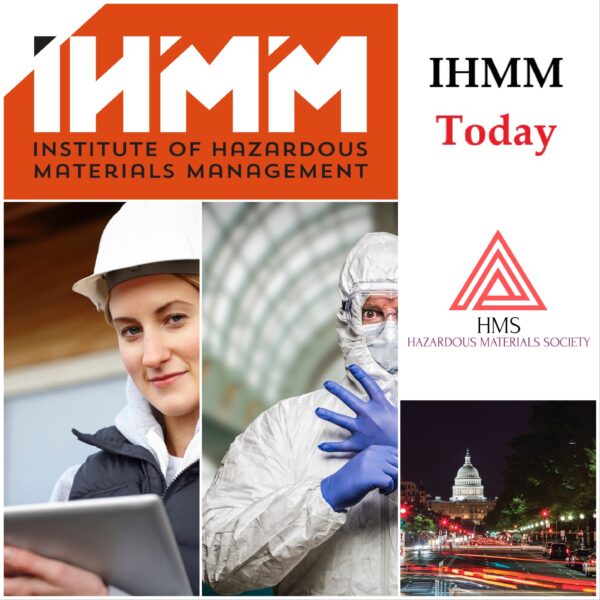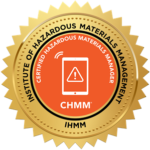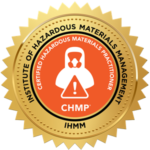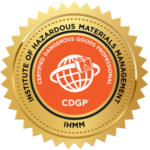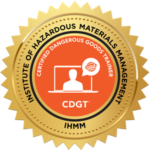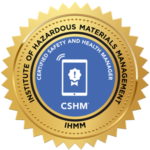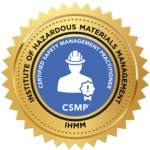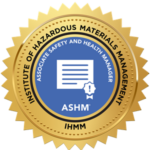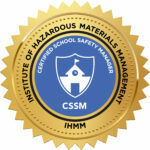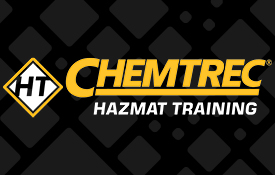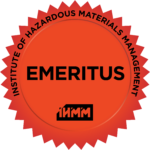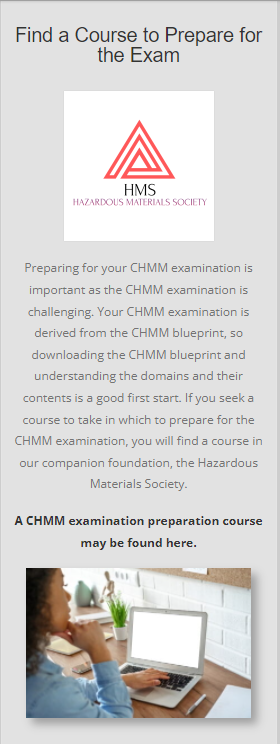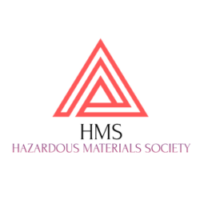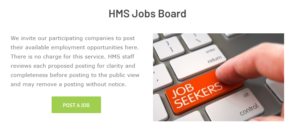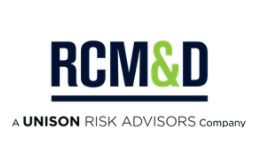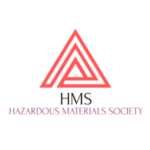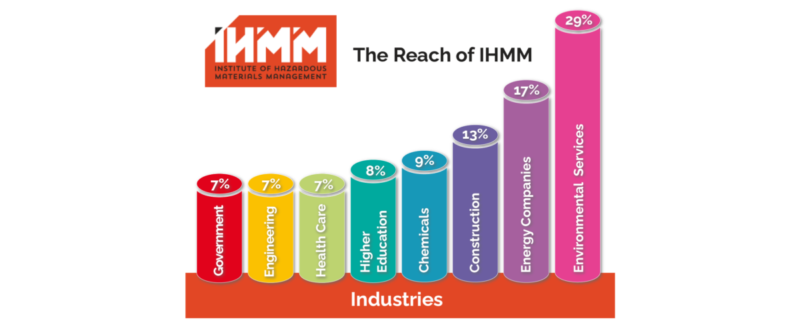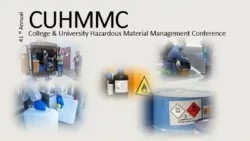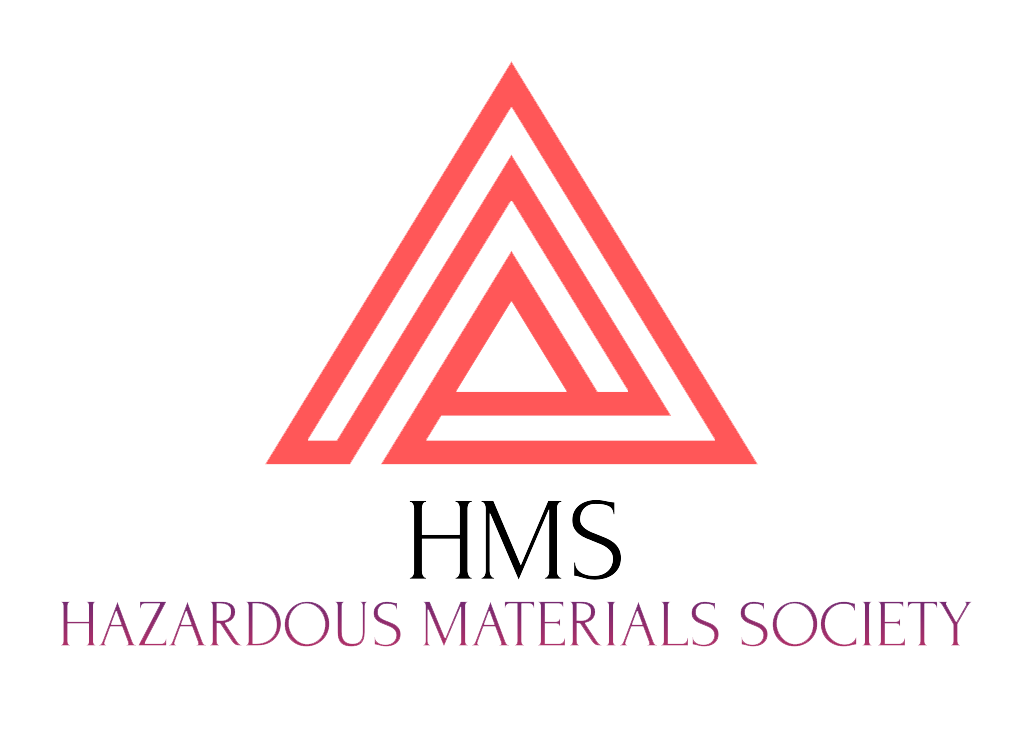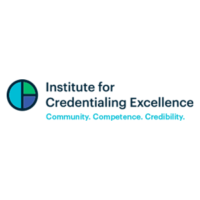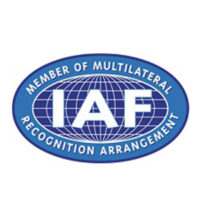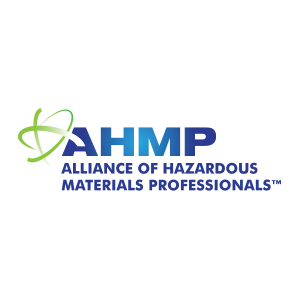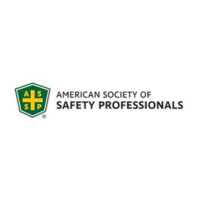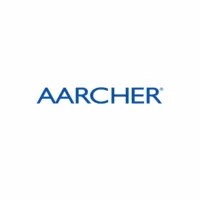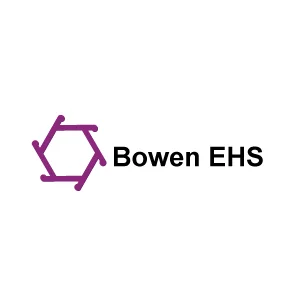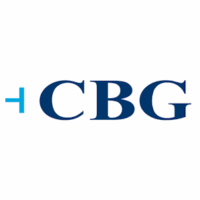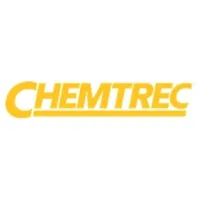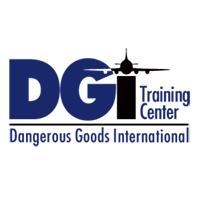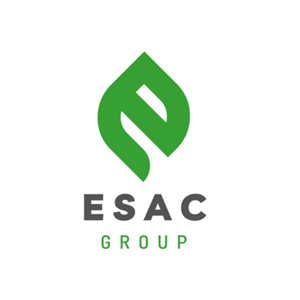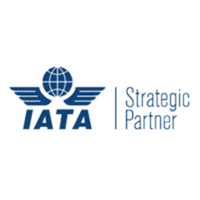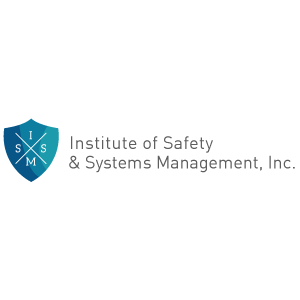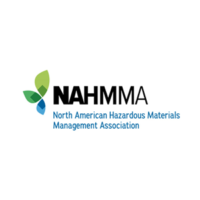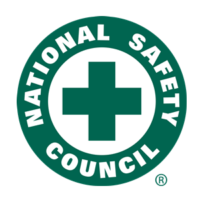Home | IHMM Credentials | Certificants | About IHMM | Event Calendar | Archive | Advertise with IHMM
IHMM Credential Recognition
Below you will see the credential badges that are now in each CHMM, CHMP, CDGT, CDGP, Student CHMM, CSHM, CSMP, CSSM, and ASHM certificant’s MYIHMM account. Every IHMM certificant may use these badges, linked as those below are to their IHMM credential page, for their email signatures, business cards, and other social media applications. You’re justifiably proud of the accomplishment of having earned your credential and you can show the rest of the world. Simply right-click on the badge of choice, then save as to your computer, and then load it to wherever you want to use it, and please link that back to https://ihmm.org/.
Hazardous Materials / Dangerous Goods Transportation Credentials
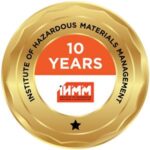
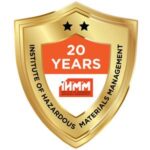
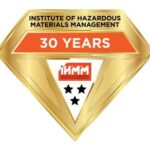
IHMM Certificant Recognition
Throughout our certificant’s MYIHMM accounts are placed 10 Year, 20 Year, and 30 Year badges signifying their longevity as an IHMM certified professional.
With a link from your credential badge to the IHMM website [see above] you can not only stand out as an IHMM-certified professional, you can also promote IHMM credentials to others. Right-click on the badge of choice, save as to your computer, then load it to whatever medium you choose.
IHMM has Distinguished Diplomates and Fellows of the Institute badges to the appropriate people in the MYIHMM database. These two badges are accompanied by lapel pins sent to each of those distinguished by holding these designations.
Follow IHMM

IHMM is in all 50 of the United States and in 85 countries around the World.
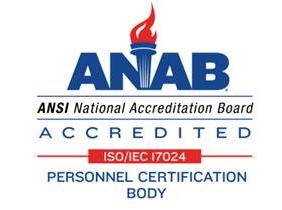
IHMM Credentials Accredited By

NEED HELP?

Need Help? On the IHMM website just click on the “NEED HELP?” button
and let us know what you need and the right person will get right back with you.
Need Help? On the IHMM website just click on the “NEED HELP?” button
and let us know what you need and the right person will get right back with you.
IHMM RECENT NEWS
Seeking a carbon standard for biogas
New Hampshire to study its inbound out-of-state waste
What are the health worries around pesticides?
Plants Remove Cancer Causing Toxins from Air
AI Finds Promising New Antibiotic for Superbug
Engineers Harvest Abundant Clean Energy from Thin Air, 24/7
Updates to New Chemicals Regulations Under the Toxic Substances Control Act (TSCA)
Protection of Stratospheric Ozone: Listing of Substitutes Under the Significant New Alternatives Policy Program in Commercial and Industrial Refrigeration
New Source Performance Standards for Greenhouse Gas Emissions From New, Modified, and Reconstructed Fossil Fuel-Fired Electric Generating Units; Emission Guidelines for Greenhouse Gas Emissions From Existing Fossil Fuel-Fired Electric Generating Units; and Repeal of the Affordable Clean Energy Rule
Rhode Island PFAS Lawsuit The Latest State Action
NGOs Call on EPA to Remove PFAS from Plastic Containers
EPA Proposes to Eliminate TSCA Exemptions for PFAS and PBTs; Proposes Updates to Other TSCA Regulations
Michigan PFAS Drinking Water Challenge Briefing Complete
Fit for 55 Package: EU Revises the EU Emissions Trading System and Establishes a New Carbon Border Adjustment Mechanism
PFAS and Beyond: Restatement of Torts Will Shape Toxic Torts Litigation
EPA Proposes New Rules Strictly Limiting Greenhouse Gas Emissions from the Nation’s Fossil Fuel Power Plants
White House Roundtable Focuses on Workplace Mental Health
Encouraging Mental Health Awareness: How to Support New Employees from Day One
Building Business Bridges: Networking Events at ASSP Safety 2023
Contractor Faces Proposed Penalties of $112K After Trench Collapse, Worker Fatality
OSHA Seeking Stakeholder Input on Leading Indicators for Potential New Resource
Dollar General facing $3.4 million in new OSHA fines
Know how to properly assess noise levels and choose the proper protection
Connected worker practices can transform worker safety
How to proactively manage construction safety through pre-operational planning
Litigation over toxic chemicals is spearheaded by public sympathy for ‘heroes’
US Department of Labor investigation finds Columbus children’s hospital exposed nurses, other employees to workplace violence
US Department of Labor finds Colorado contractor exposing workers to trench cave-ins, including one that caused teenager’s fatal injuries
A Brave New World: Asset management for the water sector
Backlog rebounds from 7-month low
The State of Labor in Construction
The Art of Selling Safety
A Guide to OSHA-Compliant Hearing Testing
I-Team: Undeclared dangerous goods pose risk to cargo ships, crew
Shipping Vehicles and The IMDG Code
New York Senate passes package of rail regulations
Ototoxic chemicals are everywhere, with serious consequences for workers
INSIDE IHMM
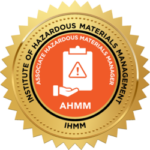
Associate Hazardous Materials Manager® [AHMM®] Launches
IHMM is pleased to announce, after more than 24 months of work, that the Associate Hazardous Materials Manager® [AHMM®] credential has launched this Memorial Day.
There are 250,000 people who muster out of the U.S. Armed Services each year, the vast majority of whom have no degree and less than 3 years of experience in an MOS/AFCS – or military occupation. Until now, IHMM had no credential for any of these servicemen and women. Each year, thousands of people graduate with a degree in environmental engineering or other sciences, get their first job in the environmental field and thus have no experience, and IHMM has no credential for these people either.
Now, IHMM has the Associate Hazardous Materials Manager® [AHMM®] credential for military personnel with no degree and less than 3 years of experience, or recent college graduates with little or no experience, or Student CHMM® graduates, may apply for and take examinations.
The AHMM certification blueprint is here.
IHMM thanks the AHMM Scheme Committee > https://ihmm.org/ahmm-scheme-committee/ as he success of this project can be largely attributed to the passionate subject matter experts in their field who were fully engaged in the process, and committed to the mission of IHMM and the AHMM credential. Thank you for volunteering your time, your expertise, and your passion!! All of the members hold the CHMM certification.
Ten subject matter experts (SMEs) serve on the AHMM Scheme Committee, working under the guidance of Nicola Areshenko, Chair, and Craig Dickensheets, Vice-Chair of the AHMM Scheme Committee, and M. Patricia Buley, IHMM’s Director of Certification and Accreditation.
Subject Matter Expert | Organization | Location |
| Nicola Areshenko, Chair | US Public Health Service | CA |
| Craig Dickensheets, Vice-Chair | HazTek Safety Management | VA |
| Andrew Douglas Adams | IKON Environmental Solutions, LP | TX |
| Nicole Brown | General Dynamics – OTS | IL |
| Michael Decker | Tradebe Environmental Services | TN |
| Alec Hart | Colorado Springs Utilities | CO |
| Lewis Haynes | Tennessee Department of the Environment and Conservation | TN |
| Alfonso Nunez | Environmental Resources Management, Inc. | CA |
| Rebecca Tracy | US Vanadium | AR |
| Xiaoyu Zhang | Environeer Engineering Consulting | TX |
The AHMM website is here > https://ihmm.org/ahmm/


IHMM Board of Directors Nominations
IHMM Directors and Officers are volunteers who serve without pay. They may serve up to two, four-year terms. Directors are responsible for the governance of IHMM, including establishing the overall direction of IHMM, the appointment of Executive Director, policy-making, and financial management.
IHMM has two Board seats expiring at the end of 2023. IHMM is soliciting candidates for these two seats; one an At-Large Director seat that may be held by a CHMM, CHMP, CDGP, CSHM or CSMP. One a CSMP Director seat that must be held by a CSMP.
The composition of the present Board is here > https://ihmm.org/board-of-directors/
Qualified candidates may submit nomination papers [self nomination is acceptable] on or before June 30, 2023. The documents for this announcement, procedures, and nomination form are here:
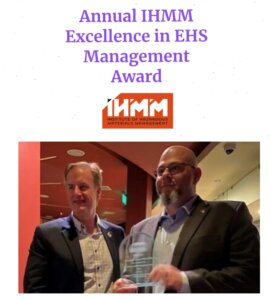
IHMM Excellence in EHS Management Award
The Excellence in EHS Management Award recognizes an individual who has excelled in their role as an EHS manager. The Institute for Hazardous Materials Management [IHMM] will present the award at the annual National Safety Council Expo.
The honoree will receive a commemorative plaque and be recognized in a press release and in IHMM member communications. Travel expenses to the award ceremony will be subsidized. If traveling from overseas IHMM will pay travel expenses from the nearest port of entry.
Nominations will be accepted from March through July of each year and the presentation to the winner will be in conjunction with the National Safety Council Congress and Expo, this year on October 23-25, 2023 in New Orleans.
Make your nominations here >> https://ihmm.org/ehs-management-award/
See previous award winners here >> https://ihmm.org/past-honorees/
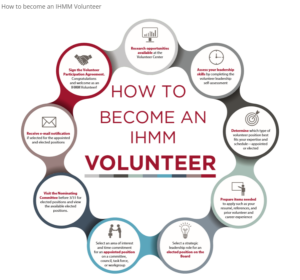
IHMM Needs Volunteers
“There’s nothing stronger than the heart of a volunteer.” — Jimmy Doolittle. We all benefit from the expertise, knowledge sharing, content creation and mentoring that our volunteer leaders share with our communities of practice.
IHMM has a wide variety of ways that our certificants and members can volunteer their time, make a substantial contribution to their communities of practice, and earn valuable Continuing Maintenance Points [CMPs].
Volunteering with IHMM is a deeply rewarding and giving endeavor, ranging from being a subject matter expert on a scheme committee to leading discussions in our COLLABORATION engagement platform to becoming a mentor for a college student.
Take a few minutes and review How to Become An IHMM Volunteer, and then scroll down and take the volunteer self-assessment.
CHMP Scheme Committee
- Must be a CHMP > https://ihmm.org/chmp-scheme-committee/
Government Affairs Committee
- Open to all certificants, We need volunteers in these 16 states – Alaska, Hawaii, Idaho, Montana, Arizona, Kansas, Iowa, Missouri, Illinois, Kentucky, Florida, Delaware, Rhode Island, Massachusetts, Vermont, and Maine. These are states where the requirements of an “environmental professional” or QEP are cited that coincide with an IHMM credential so that relatively little work would need to be done to clarify the desired outcome.
- > https://ihmm.org/government-affairs-committee/
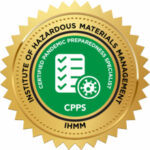
IHMM Certifications in Development Update
- The Certified Pandemic Preparedness Specialist [CPPS] credential had a review by the IHMM Board on April 21st and IHMM will be able to start to build the website. The examination questions for the CPPS exam are being loaded into the Kryterion system at this writing. Dan Blankfeld and Gene Guilford have met with the Maryland Congressional delegation on this credential and look forward to more meetings.

A Collaborative Culture
There are 968 different conversations going on in the IHMM/HMS Collaboration platform this week.
A collaborative culture is important for every business but is especially important for our hazardous materials, dangerous goods, environment, health, and safety communities of practice. Do you have a problem you need to solve and want the opinions of your colleagues? This is where we come together to help each other.
IHMM credentialed professionals are at the top 1% of their professions and their reach is global. We are at the forefront of environmental protection, health, and safety and this is where collaborating with the best people in their fields, always willing to help one another, lessens the stress of our jobs, and where we strive as a team to make a difference of which we are proud.
We opened COLLABORATION to enable thousands of certificants and supporters to collaborate together. You can collaborate here.
Access to COLLABORATION is through the same username/password you use to access your MYIHMM account. Having a problem? Contact Jimmy Nguyen at [email protected]

IHMM Government Affairs – Needs You
IHMM is building volunteers for its Government Affairs Committee – open to all IHMM certificants. Anyone may join the committee on its website here >> https://ihmm.org/government-affairs-committee/
Furthering the interests of certificants to secure government recognition of IHMM credentials
Determine which state or federal regulatory actions to become involved with
Determine which state or federal legislative activities to become involved with
The committee may be as busy as it chooses to be as IHMM certificants determine the number and scope of its activities in one of the most important areas in which we work both to secure recognition as well as to promote the strengths of our subject matter experts across the broad range of government policy making that affects us all.

SCOTUS Redefines the Bounds of the Clean Water Act with Its Decision in Sackett v. United States
In a decision that has been anticipated for months, the U.S. Supreme Court issued its opinion in Sackett v. United States, essentially rewriting jurisprudence established previously in Rapanos v. United States, 547 U.S. 715 (2006), and doing away with the “significant nexus” test adopted by the Court in that case for determining the jurisdictional reach of the term “waters of the United States” under the federal Clean Water Act (CWA or the Act).
Similar to Rapanos, where a divided Court in a 5-4 ruling found that wetlands, even if not physically connected to traditional navigable waters, are subject to the jurisdiction of the CWA where there is a significant nexus between the wetlands and the traditional navigable waters. The present Court, while agreeing unanimously that the wetlands in question were not “waters of the United States,” was again deeply divided, 5-4, as to the proper legal standard to apply in making the determination. The majority opinion, written by Justice Samuel Alito and joined by Justices Clarence Thomas, Neil Gorsuch, John Roberts, and Amy Coney Barrett, found that wetlands not connected physically to traditional navigable waters are not subject to the jurisdiction of the CWA. Borrowing heavily from Justice Antonin Scalia’s dissenting opinion in Rapanos, the Court found that to be considered “adjacent” wetlands and subject to the CWA, there must be a continuous surface connection that makes it difficult to determine where the water ends and the wetlands begin. The Court stated that “the CWA extends to only those wetlands that are ‘as a practical matter indistinguishable from waters of the United States.’”
The decision narrows the test for determining whether wetlands are subject to federal jurisdiction under the CWA and as a result reduces the scope of the Act and what waters fall within the jurisdiction of the U.S. Environmental Protection Agency and the U.S. Army Corps of Engineers, and it promises to have a significant impact upon ongoing litigation regarding multiple challenges to federal rules attempting to define “waters of the United States.”
In a concurring opinion written by Justice Brett Kavanaugh and joined by Justices Sonia Sotomayor, Elena Kagan, and Ketanji Brown Jackson, these four justices agreed that the use of the “significant nexus” test from Rapanos for determining whether wetlands are covered under the Act was not proper, but they disagreed with how narrowly the majority would define wetlands subject to the CWA.
–Steptoe & Johnson
Here is the Supreme Court’s decision in Sackett v. United States

PHMSA – Development of Guidance on Potential Cascading Effects from Flammable Vapor Cloud Explosions
Pipeline Safety Research and Development Program
Development of Guidance on Potential Cascading Effects from Flammable Vapor Cloud Explosions
Objective: The overall objective of this research is to provide guidance on the potential cascading effects from flammable vapor cloud explosions (VCEs) and projectiles regarding structural damage at liquefied natural gas (LNG) facilities. In support of this objective, the following tasks are outlined:
- Identify the range of LNG facility types and configurations, with an emphasis on defining the explosion sources, flammable inventories, and the characteristics of targets.
- Assess the blast capacities of the targets.
- Define the VCE potential of the explosion sources and how this interacts with the targets.
- Develop guidance on the cascade potential that is sensitive to the characteristics of the type of LNG facility.
(Project page and final reporting are available: https://primis.phmsa.dot.gov/matrix/PrjHome.rdm?prj=923).
Meeting Information:
Wednesday, May 31, 2023, 12 p.m. to 1p.m. ET
Microsoft Teams Meeting and Calendar Invite:
Agenda:
Welcome and PHMSA Introduction
Summary Slideshow of Project Results
Open Q&A and Discussion
Adjourn
Please contact Andrea Ceartin (406-577-6818 or [email protected]) with any questions
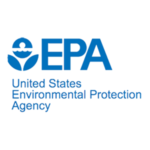
2022 TRI Reporting Deadline Is July 1, 2023 — What Is New This Year?
Each year about this time, companies are focused on the deadline to submit Toxics Release Inventory (TRI) data to the U.S. Environmental Protection Agency (EPA). This year is no different as the July 1, 2023, deadline is rapidly approaching. By this date, entities subject to the reporting requirement must submit data for activities that occurred during 2022. Companies are required to report if they meet chemical activity thresholds and are either in a covered industry sector and exceed the employee threshold; or are specifically required to report based on a determination by EPA under the Emergency Planning and Community Right-to-Know Act (EPCRA) Section 313(b)(2). EPA’s TRI Threshold Screening Tool can help companies determine if they are subject to TRI reporting. The tool uses a step-by-step questionnaire to help companies determine whether they meet or exceed the facility, employee, and chemical thresholds established by EPA. For more information, please read the full memorandum.
Read more >> https://www.lawbc.com/regulatory-developments/entry/2022-tri-reporting-deadline-is-july-1-2023-what-is-new-this-year

Methylene Chloride; Regulation Under the Toxic Substances Control Act (TSCA)
The Environmental Protection Agency (EPA) is proposing to address the unreasonable risk of injury to human health presented by methylene chloride under its conditions of use as documented in EPA’s June 2020 Risk Evaluation for Methylene Chloride and November 2022 revised risk determination for methylene chloride prepared under the Toxic Substances Control Act (TSCA).
TSCA requires that EPA address by rule any unreasonable risk of injury to health or the environment identified in a TSCA risk evaluation and apply requirements to the extent necessary so that the chemical no longer presents unreasonable risk. Methylene chloride, also known as dichloromethane, is acutely lethal, a neurotoxicant, a likely human carcinogen, and presents cancer and non-cancer risks following chronic exposures as well as acute risks. Central nervous system depressant effects can result in loss of consciousness and respiratory depression, resulting in irreversible coma, hypoxia, and eventual death, including 85 documented fatalities from 1980 to 2018, a majority of which were occupational fatalities (see Unit II.A.).
Nevertheless, methylene chloride is still a widely used solvent in a variety of consumer and commercial applications including adhesives and sealants, automotive products, and paint and coating removers. To address the identified unreasonable risk, EPA is proposing to: prohibit the manufacture, processing, and distribution in commerce of methylene chloride for consumer use; prohibit most industrial and commercial uses of methylene chloride; require a workplace chemical protection program (WCPP), which would include a requirement to meet inhalation exposure concentration limits and exposure monitoring for certain continued conditions of use of methylene chloride; require recordkeeping and downstream notification requirements for several conditions of use of methylene chloride; and provide certain time-limited exemptions from requirements for uses of methylene chloride that would otherwise significantly disrupt national security and critical infrastructure.
Read more >> https://ihmm.org/methylene-chloride-regulation-under-the-toxic-substances-control-act-tsca/
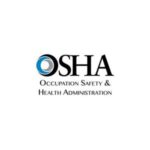
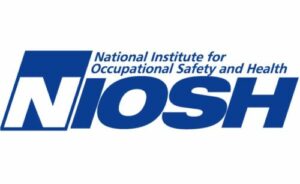
OSHA and NIOSH Update Handbook for Small Businesses
Self-inspection checklists for ergonomics, young workers, workplace violence and infection control have been added to the OSHA/NIOSH Small Business Safety and Health Handbook.
The revised handbook features checklists on a wide variety of topics, including electrical safety, emergency planning, fire safety, hazard communication, heat illness prevention, noise exposure and fall protection. It also details how to implement a safety and health program and the value of having a program in place.
“Employers that make job safety and health a real part of their everyday operations will benefit in the long run,” the handbook states. “Investing in a safety and health program now will help you avoid possible losses in the future. A safe business is a sound business.”

OSHA to Hold Public Meeting June 15 to Discuss Modernizing, Improving, Expanding its Voluntary Protection Programs
The U.S. Department of Labor’s Occupational Safety and Health Administration will hold a stakeholder meeting on Thursday, June 15 from 10 a.m. to 4:30 p.m. EDT, to discuss modernizing, improving and expanding the agency’s Voluntary Protection Programs. The public may attend the meeting in person in the Frances Perkins Building, U.S. Department of Labor, 200 Constitution Ave., NW, Washington, DC 20210. Register to attend in person or virtually at VPP Stakeholder Meeting Registration by June 1. Virtual attendees will only be in listening mode; questions and comment opportunities will not be available.
The agency seeks input from stakeholders, regardless of whether they have had direct, indirect and no involvement with VPP facilities, on questions such as the following:
- Are there leading indicators for measuring future performance of safety and health management systems?
- How can OSHA encourage more employers to apply to VPP?
- Aside from current customer experience surveys, how can OSHA solicit more frequent and timely feedback on the program?
- Beyond the OSHA Challenge, how can the agency increase the use of effective safety and health management systems by companies not in the VPP?
- How can OSHA improve the program’s quality or integrity?
- Given OSHA’s limited resources, how can the agency grow VPP more efficiently?
- In what ways, can safety and health consensus standards be used to create pathways for companies to participate in the VPP?
For more information, see the OSHA Trade Release.
Beltway Buzz – Ogletree Deakins
Debt Ceiling Debate Deadlock. Over the years, the Buzz has bemoaned our elected officials’ penchant for brinksmanship, but the current situation is getting ridiculous. Once again, negotiations over raising the debt ceiling took center stage in Washington, D.C., this week. Like most disputes in life, it all comes down to money, with Republicans seeking less spending in the coming fiscal year, while Democrats insist on a “clean” bill to raise the debt ceiling. A deal remains elusive, and it is probably not great that the U.S. House of Representatives is scheduled to be out next week (though members will be instructed to return to D.C. within twenty-four hours if needed). According to the latest update from Treasury Secretary Janet Yellen, “it is highly likely that Treasury will no longer be able to satisfy all of the government’s obligations if Congress has not acted to raise or suspend the debt limit by early June, and potentially as early as June 1.”
EEOC Issues More Guidance on Use of Artificial Intelligence. Last week, the Buzz discussed the U.S. Congress’s nascent role in setting parameters for the use of artificial intelligence (AI) technology. Not to be outdone by Congress, late last week, the U.S. Equal Employment Opportunity Commission—which has already acknowledged such technology’s potential impact on discrimination law—issued a second guidance document on the subject. Specifically, the guidance document addresses how the use of “algorithmic decision-making tools” can have a disparate impact on applicants in a way that violates federal anti-discrimination law. EEOC cautions employers that they may be held responsible if their algorithmic tools discriminate against job candidates, even if the tools are designed or administered by outside vendors. Jennifer G. Betts, Danielle Ochs, and Zachary V. Zagger have the details. One thing to keep in mind as our regulators attempt to address the proliferation of AI in the workplace: Title VII of the Civil Rights Act of 1964 does not grant EEOC substantive rulemaking authority.
DOL Issues PUMP Act Guidance. On May 17, 2023, the U.S. Department of Labor’s (DOL) Wage and Hour Division issued a field assistance bulletin (FAB) providing guidance for agency officials who are enforcing the Providing Urgent Maternal Protections for Nursing Mothers Act (PUMP Act). The memo clarifies the following issues:
- Break time. DOL emphasizes that the “frequency, duration, and timing of breaks” to pump breast milk will vary depending on the employee and child, and that while a break schedule may be agreed to, the employer can’t implement a fixed schedule that does not work for the employee. Further, this “may need to be adjusted” as the employee’s needs change.
- Compensation. Unless otherwise required by law, employers are not required to compensate nonexempt employees who break to pump breast milk, but “[s]hort breaks, usually 20 minutes or less, provided by the employer must be counted as hours worked.” If the employee is not completely relieved of her duties while pumping, the time must be compensated.
- Space requirements. The PUMP Act requires employers to providing pumping employees with a non-bathroom space that is shielded from view and free from intrusion. DOL suggests a sign or lock for the space and notes that “[t]he location must be functional as a space for pumping.” This means the space must contain a chair and a table or counter, and ideally should have access to electricity and a sink nearby.
The memo also details the exemption for crewmembers of air carriers, the exemption for small employers that can demonstrate that compliance requires an undue hardship, the delayed application (beginning December 29, 2025) for rail carriers and motor coach services operators, and encourages employers to post an updated Fair Labor Standards Act (FLSA) poster.
House Committee Shines Light on NLRB Actions. On May 23, 2023, the House Subcommittee on Health, Employment, Labor, and Pensions held a hearing entitled, “Protecting Employees’ Rights: Ensuring Fair Elections at the NLRB.” During the hearing, Republicans and their witnesses focused on National Labor Relations Board (NLRB) General Counsel Jennifer Abruzzo’s April 2022 memo limiting employer speech, as well as her ongoing efforts to install a card check union representation process. In addressing this later issue, one witness wrote, “The failure to achieve legislative support for card check strongly suggests the Board lacks the power to enact it on its own.” On the other hand, a union lawyer testified in favor of limiting employer’s statutory rights to discuss the pros and cons of unionization with employees, advocated for electronic voting in union representation elections (which has been found to be prone to fraud and coercion), and encouraged Congress to pass the Protecting the Right to Organize (PRO) Act.
Bipartisan Immigration Bill Lands in House. This week, a bipartisan group of House members introduced the “Dignity for Immigrants while Guarding our Nation to Ignite and Deliver the American Dream Act of 2023” (DIGNIDAD (Dignity) Act of 2023) (H.R. 3599). The ambitious bill would overhaul the entire immigration system. Among other changes, the bill would:
- institute mandatory E-verify;
- only count the applicant (not spouse or children) toward the high-skilled visa cap;
- provide work authorization to H-1B spouses;
- staple an O visa to the diplomas of science, technology, engineering, and mathematics (STEM) Ph.D. graduates to allow them to work in the United States;
- provide funding to improve visa processing at U.S. Citizenship and Immigration Services (USCIS), the U.S. Department of State, and the Office of Foreign Labor Certification at DOL;
- codify the Flores settlement agreement regarding standards for the detention, treatment, and release of unaccompanied minors;
- establish five humanitarian campuses along the U.S. southern border and an additional five campuses in Latin America where asylum seekers will reside while their case is decided, ending “catch and release”;
- provide Dreamers and Deferred Action for Childhood Arrivals (DACA) recipients “with conditional permanent resident status for 10 years” and “an earned pathway to adjust to lawful permanent resident status”;
- provide a conditional program for undocumented immigrants to earn legal status through a series of background checks, restitution, payment of back taxes, etc.; and
- modernize the H-2A guest worker program by providing a year-round agricultural workforce and simplifying the wage and petition processes.
Of course, with a bill this sweeping, there are provisions that some groups are going to like and provisions that some groups aren’t going to like. The solution, of course, would be some type of legislative compromise, which is a tall order in our current political climate.
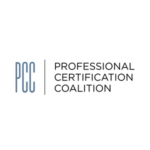
Professional Certification Coalition
IHMM is a member of the PCC. The PCC monitors state and federal legislative and regulatory activity affecting professional certification on an ongoing basis. The PCC has compiled several “Watchlists” identifying and analyzing provisions in pending legislation at both the state and federal level that, under applicable rules, may still be enacted in the current legislative session. Depending on the carry-over rules in the relevant legislature, the charts listing current legislation may include bills introduced in a prior year. In addition, the PCC compiles each year a chart of enacted legislation that affects certification. The charts include hyperlinks to every bill or executive order. Note that the Watchlist and the Enacted Legislation document do not include profession-specific legislation and do not include regulatory initiatives. The charts will be updated as needed based on new developments.
Other State and Federal Activities
In this section we will highlight other state and federal government affairs activities undertaken by the committee.
Current Priorities April-June 2023
PHMSA Recycled Plastics Policy – https://www.federalregister.gov/documents/2023/04/14/2023-07869/hazardous-materials-request-for-feedback-on-recycled-plastics-policy
Ohio EPA Hazardous Waste Rules – https://epa.ohio.gov/about/media-center/events/public-hearing-HazWasteRules
NY Department of Labor rulemaking concerning the recognition of the CSHM and CSMP. IHMM’s comments concerning initiating this rulemaking are here
Work with Eric Vega in Puerto Rico concerning credential recognition
Review of the Governor of Nevada’s Executive Order concerning licensing boards and potential for recognition of the CHMM. IHMM’s comments on the Governor’s Executive Order are here
Scheduling meetings with the Maryland Congressional delegation concerning the Certified Pandemic Preparedness Specialist [CPPS] credential
IHMM Credential Recognition
The highest priority of IHMM’s Government Affairs Committee is the recognition of IHMM’s credentials by government. We have made substantial progress in the two years we have undertaken this endeavor, as outlined in detail here > https://ihmm.org/credential-recognition/
In this project we have 45-in-5, increasing the number of states that recognize IHMM credentials.
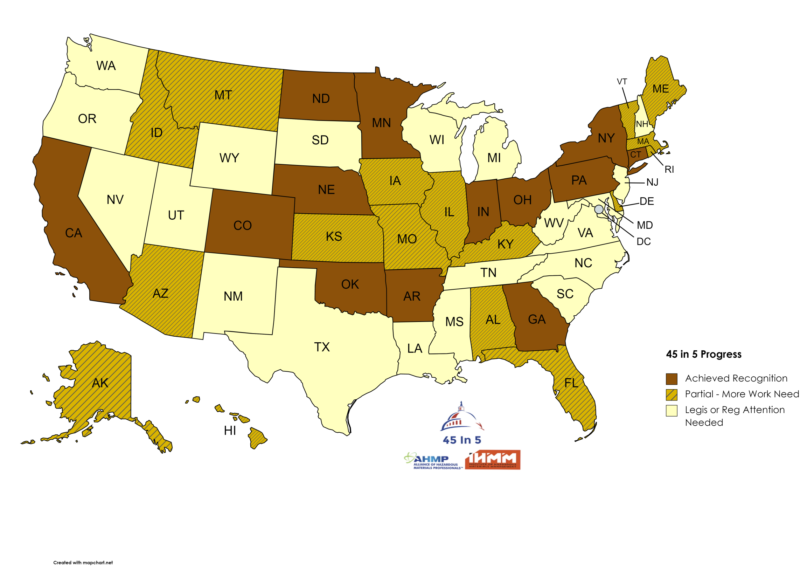
- We have already succeeded in 13 states – New York, Connecticut, Pennsylvania, Indiana, California, Colorado, Nebraska, Minnesota, Arkansas, Oklahoma. Ohio, North Dakota, and Georgia. [Red states in the map above]. These are states where IHMM credentials are cited or 40 CFR 312.10 is cited by reference.
- We have partially succeeded in another 16 states – Alaska, Hawaii, Idaho, Montana, Arizona, Kansas, Iowa, Missouri, Illinois, Kentucky, Florida, Delaware, Rhode Island, Massachusetts, Vermont, and Maine. [Orange/Black Stripe states in the map above] These are states where the requirements of an “environmental professional” or QEP are cited that coincide with an IHMM credential so that relatively little work would need to be done to clarify the desired outcome.
- We have 21 states where no reference to an IHMM credential is made in either statute or regulation, nor is there anything defined in the area of an environmental professional. These states will require legislation or regulatory work. [Yellow states in the map above].
in January 2022 Gene Guilford released the 40 CFR § 312.10 EPA regulation that states a private certification that meets or exceeds the requirements of the regulation is an Environmental Professional under the regulation. Here is the crosswalk between the 40 CFR § 312.10 EPA regulation and the Certified Hazardous Materials Manager [CHMM] blueprint. The CHMM meets or exceeds the requirements of an Environmental Professional.
Here’s what we ask each volunteer to do:
- Watch legislative and regulatory developments in your state that provide an opportunity for us to create amendments or other interventions
- Be willing to speak with regulators and legislators in your area about the recognition efforts we craft together

Regulatory Updates
| DateSort ascending | SubjectSortable column | Document TypeSortable column | Part |
|---|---|---|---|
| 05/30/2023 | Hazardous Materials: Harmonization With International Standards | Proposed Rule | 171, 172, 173, 175, 176, 178, 180 |
| 05/26/2023 | Hazardous Materials: Notice of Applications for Modification to Special Permits | Notice | |
| 05/26/2023 | Hazardous Materials: Notice of Applications for New Special Permits | Notice | |
| 05/26/2023 | Hazardous Materials: Notice of Actions on Special Permits | Notice | |
| 05/26/2023 | Hazardous Materials: Adjusting Registration and Fee Assessment Program; Notice of Public Meeting | Notice | |
| 05/22/2023 | Hazardous Materials: Information Collection Activities | Notice | |
| 05/18/2023 | Pipeline Safety: Gas Pipeline Leak Detection and Repair | Proposed Rule | 191, 192, 193 |
| 05/05/2023 | Safety of Underground Natural Gas Storage Public Meeting | Notice | |
| 04/26/2023 | Hazardous Materials: Adoption of Miscellaneous Petitions and Updating Regulatory Requirements | Proposed Rule | 107, 171, 172, 173, 178, 180 |
Notice of Public Meetings in 2023 for International Standards on the Transport of Dangerous Goods
PHMSA’s Office of Hazardous Materials Safety will be hosting public forums in advance of four international meetings, to allow the public to give input on current proposals being considered by the International Civil Aviation Organization’s (ICAO) Dangerous Goods Panel (DGP) and the United Nations Sub-Committee of Experts on the Transport of Dangerous Goods (UNSCOE TDG). The international meetings include:
- The 62nd session of the UNSCOE TDG, scheduled for July 3 to July 7, 2023, in Geneva, Switzerland
- The 29th session of the ICAO TDG, scheduled for November 13 to 17, 2023, in Montreal, Canada
- The 63rd session of the UNSCOE TDG, scheduled for November 27 to December 6, 2023, in Geneva, Switzerland
Each of these public meetings will be held approximately two weeks before the corresponding international meeting. Specific information for each meeting, including date, time, conference call-in number, and details for advance registration will be posted when available on the PHMSA website under “Upcoming Events.” These meetings will be virtual, with hybrid options available as possible, pending public health guidelines.
The Federal Register announcement can be found here.

Hazardous Materials: Harmonization With International Standards
PHMSA proposes to amend the Hazardous Materials Regulations to maintain alignment with international regulations and standards by adopting various amendments, including changes to proper shipping names, hazard classes, packing groups, special provisions, packaging authorizations, air transport quantity limitations, and vessel stowage requirements.
FR Citation: 88 FR 34568
Published 5/30 comments by 7/31

Save the Date for “TSCA Reform — Seven Years Later” on June 29, 2023
Bergeson & Campbell, P.C. (B&C®), the Environmental Law Institute (ELI), and the George Washington University Milken Institute School of Public Health are pleased to announce the seventh annual Toxic Substances Control Act (TSCA) conference, “TSCA Reform — Seven Years Later,” to occur Thursday, June 29, 2023. This complimentary virtual conference featuring speakers from the U.S. Environmental Protection Agency (EPA) and non-governmental and industry stakeholders will provide updates on a host of topics, including the interface of science and policy under TSCA, new chemicals, risk evaluation and management, the regulation of articles, and more.
Materials from the 2022 “TSCA Reform — Six Years Later” conference are available to ELI Members at https://www.eli.org/events/tsca-reform-six-years-later.
- WEBINAR — TOP TSCA TOPICS: Cumulative Risk, NAMs, Risk Evaluations, CBI, And More!, May 17, 2023, 11:00 a.m. – 12:00 p.m. (EDT), Via Webinar: Panelists Anna Lowit, Senior Science Advisor, Office of Pollution Prevention and Toxics (OPPT), and Richard E. Engler, Ph.D., Director of Chemistry, Bergeson & Campbell, P.C. (B&C®), will discuss New Approach Methodologies (NAM), cumulative risk assessment methodologies, systematic review procedures, new approaches to new chemical reviews, per- and polyfluoroalkyl substances (PFAS) reporting, and confidential business information (CBI) protections. Register now.
- RECORDED WEBINAR ON-DEMAND — “Extended Producer Responsibility (EPR) Regulations”: Panelists discuss the history and evolution of EPR legislation, expected developments that will affect the chemical and chemical product industry, and what companies need to know to prepare for these changes. Panelists included LeRoy (Lee) C. Paddock, Distinguished Professorial Lecturer of Environmental Law at the George Washington University Law School; Edith G. Nagy, Regulatory Consultant, B&C; and Lynn L. Bergeson, Managing Partner, B&C. Watch now.
EPA Releases Congressional Justification For FY 2024 Budget: EPA has posted the justification for its fiscal year (FY) 2024 appropriation estimates for the Committee on Appropriations (Congressional Justification (CJ)). According to the CJ, EPA’s FY 2024 budget includes $470.7 million and 1,677 full-time equivalents (FTE) for Objective 7.1, “Ensure Chemical and Pesticide Safety.” The CJ includes the following target dates for actions under the Toxic Substances Control Act (TSCA):
- By September 30, 2026, complete at least eight high-priority substance TSCA risk evaluations annually within statutory timelines compared to the FY 2020 baseline of one;
- By September 30, 2026, initiate all TSCA risk management actions within 45 days of the completion of a final existing chemical risk evaluation; and
- By September 30, 2026, review 90 percent of risk management actions for past TSCA new chemical substances reported to the 2020 Chemical Data Reporting (CDR) Rule compared to the FY 2021 baseline of none.
EPA Will Hold GenRA Training On May 23, 2023: EPA will hold training on May 23, 2023, on Generalized Read-Across (GenRA), a publicly available tool that uses an automated approach to make reproducible read-across predictions of toxicity. EPA states that read-across “is a commonly used data gap filling technique whereby endpoint information for one substance is used to predict the same endpoint for another substance, supported by structural or other feature similarities.” Specifically targeted for decision-makers, EPA has divided the training into two parts to accommodate a variety of interests and schedules. Registration for one or both sessions is free but required.
- Session 1 (Presentation and Questions and Answers (Q&A)) 11:00 a.m. – 12:30 p.m. (EDT)
This session will provide an overview of GenRA content and function with opportunities for participation and Q&A.
- Session 2 (Breakout Sessions) 12:30 – 1:30 p.m. (EDT)
This session will break participants into breakout rooms to work on exercises in small groups, aided by facilitators.

The latest update to the International Uniform ChemicaL Information Database (IUCLID) reflects the amended information requirements for registering chemicals under the REACH Regulation. The updated formats and completeness check rules support companies in reporting their compliance with the REACH requirements.
We have published the first batch of non-confidential comments received from the public for the universal PFAS restriction proposal. We will continue to publish them on our website on a regular basis.
You can still have your say until 25 September 2023.
The five national authorities as dossier submitters and ECHA’s scientific committees will reply to the comments in due course.
We are looking for comments on the harmonised classification and labelling (CLH) proposals for:
- 1-amino-4-hydroxy-2-phenoxyanthraquinone (EC 241-442-6, CAS 17418-58-5)
- dimethachlor (ISO); 2-chloro-N-(2,6-dimethylphenyl)-N-(2-methoxyethyl)acetamide (EC 256-625-6, CAS 50563-36-5)
For dimethachlor (ISO); 2-chloro-N-(2,6-dimethylphenyl)-N-(2-methoxyethyl)acetamide, the proposal format combines the draft (renewal) assessment report prepared according to the Plant Protection Products Regulation and the proposal for CLH under the CLP regulation. For additional information, consult the Commission’s Guidelines on Active Substances and Plant Protection Products.For more information on this active substance and on the studies included in the CLH report, consult the draft assessment report on the European Food Safety Authority’s consultation website.
Have your say by 21 July 2023.

Environmentalists Fight Newsom’s Plan To Speed Infrastructure Projects
Some environmental groups are strongly opposing California Gov. Gavin Newsom’s (D) sweeping legislative proposal to speed a variety of clean energy, water, transportation and other infrastructure projects in part by relaxing the state’s umbrella environmental protection law, echoing the looming fight the Biden administration is facing as it works to cut a permitting reform deal with congressional Republicans.
“We acknowledge the Governor’s desire to promote clean infrastructure, but this proposal needs a lot of work,”
Brandon Dawson, director of Sierra Club California, said in a May 19 press release.
“Newsom must invite the environmental community to the table, and better incorporate community engagement into major legislative proposals such as this. His attempt to rush legislative language through the opaque trailer bill process in under a month is worrying at best.”
Such criticism comes as the Biden administration is scrambling to negotiate a deal with House Republicans on ways to update federal permitting practices in part to speed construction of a range of low-carbon infrastructure projects, such as new transmission that is needed to deliver renewable power and other clean resources to consumers.
–Inside EPA

Congress Eyes Permit Plan In Debt Bill, Comments Due On Power Plant ELG
Permitting Policy
Punchbowl News is hosting a May 31 discussion about updating permitting policy featuring representatives of the Alliance to Save Energy, the American Clean Power Association (ACP) and the American Petroleum Institute. The event comes as the Biden administration is said to be close to an agreement with lawmakers on legislation to streamline permitting policies for energy and other projects. Sources are suggesting that some limited measures on this issue could be included in legislation to raise the federal debt limit, though environmental justice advocates are urging the Biden administration not to weaken federal requirements.
Power Plant ELG
Comments are due by May 30 on EPA’s proposed rule strengthening Clean Water Act (CWA) effluent limitation guidelines for several forms of wastewater from coal ash and others wastes at coal-fired power plants. The proposed rule aims to meet a “zero-discharge” goal for two of those waste streams while extending a process for facilities to cease burning coal rather than upgrade. But environmentalists are already pressing EPA to expand strict technology mandates to additional waste streams while industry groups are seeking additional flexibilities.
SDWA Rule Comments
EPA is poised to receive scores of comments by May 30 on its landmark proposal to regulate six PFAS in drinking water as officials push to finalize the rule by January.The proposed Safe Drinking Water Act (SDWA) national primary drinking water regulation seeks to limit the amount of perfluorooctanoic acid (PFOA), perfluorooctanoic sulfonate (PFOS), perfluorononanoate (PFNA), perfluorohexanesulfonic acid (PFHxS), perfluoroheptane sulfonate (PFHpS), and perfluorodecanoate (PFDA) in drinking water.
During a recent virtual public hearing on the proposed rule, industry groups and environmentalists urged EPA to take vastly different steps to address per- and polyfluoroalkyl substances (PFAS) in drinking water, with industry telling the agency it should withdraw the proposal entirely until it has more occurrence data, and environmentalists seeking an even broader rule.
‘Secondary’ NOx, SOx, PM Standards
EPA’s Clean Air Scientific Advisory Committee (CASAC) will hold a May 31 virtual meeting to discuss agency staff’s draft policy assessment (PA) document that supports the ongoing review of “secondary” national ambient air quality standards (NAAQS) for nitrogen oxides (NOx), sulfur oxides (SOx) and particulate matter (PM). Secondary standards are required under the Clean Air Act to protect the environment, unlike primary standards that protect public health.
EPA staff will give a briefing on the draft PA, which it has yet to release.
Superfund Tax
Comments are due by May 30 on the Internal Revenue Service’s proposed rule implementing the recently reinstated Superfund taxes on certain chemicals. The proposed rule provides long-awaited guidance for liable industries, establishing methods for calculating rates for taxable substances, defining what it means to be a manufacturer of a chemical or substance, as well as what constitutes a “use.”
Environmental Due Diligence
The American Bar Association is hosting a May 31 webinar aimed at providing a review of the new ASTM-21 Standard for environmental due diligence and how this contrasts with the former ASTM-13 Standard.
–Inside EPA
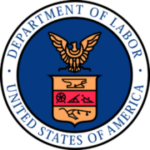

OSHA’s Safe + Sound Campaign is a nationwide opportunity to raise awareness and understanding of the value of proactive occupational safety and health (OSH) programs in all workplaces. Mark your calendars! Safe + Sound Week will take place from August 7-13, 2023. Safe + Sound Week is a nationwide event held each August that recognizes the successes of workplace health and safety programs and offers information and ideas on how to keep America’s workers safe. Registration for Safe + Sound Week opens in early July. We look forward to your participation!
Safe + Sound emphasizes the need for safety programs at small- and mid-sized businesses, which are more likely to have limited resources dedicated to safety. As you know, effective OSH programs can help organizations identify and manage workplace risk before they cause injury or illness, improving sustainability and the bottom line. Safety and health management systems are a critical best practice to ensure that OSH programs achieve significant results and lower risk exposure.
Halt a Hazard
Workplace hazards can emerge over time. Setting aside time to regularly identify and rank safeguards can help keep safety and health hazards under control and keep workers safe.
- Identify ONE hazard to control within your workplace.
- Brainstorm potential controls using OSHA’s Identifying Hazard Control Options: The Hierarchy of Controls.
- Choose and implement which control(s) are most effective for your workplace.
- Download your challenge coin and share that you have completed the Halt a Hazard Challenge via email or on social media using #HaltAHazard and #SafeAndSoundAtWork!
Beat the Heat
Under the OSH Act, employers are responsible for protecting workers from known hazards, including heat. Developing a heat injury and illness prevention plan is vital to keeping workers safe. Highlighting the dangers of heat is an important first step in educating workers and employers on how to prevent and recognize when heat is affecting workers’ health and safety. Since heat illness can be a medical emergency, planning and preparing for heat illness is essential to increase the chances of a positive outcome.
OSHA is sponsoring a Beat the Heat contest to raise awareness about the dangers and hazards of heat exposure in indoor and outdoor workplaces and to motivate workers, employers, and others to take action to prevent heat illness. To participate, stakeholders will create an awareness tool to increase worker and employer knowledge about hazardous heat in the workplace. The contest is open now, and submissions are due by June 9, 2023.
IHMM Scholarship Program
The Institute of Hazardous Materials Management is pleased to have created $32,000 in academic scholarships, divided equally between $16,000 for students enrolled in undergraduate or graduate education in approved schools and who are also Student CHMMs, and $16,000 for students enrolled in undergraduate or graduate education in approved schools and who are also Student ASHMs.
IHMM seeks to foster the growth and academic success of students whose courses of education, and participation in one of our Student certifications, will lead to those students becoming fully-certified IHMM credential holders later in their professional lives.
Go to > https://ihmm.org/scholarship/
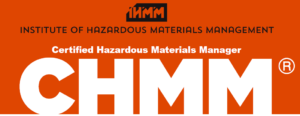
IHMM CHMMⓇ 2022 Salary Survey
IHMM is pleased to release its 2022 salary survey for Certified Hazardous Materials ManagersⓇ [CHMMⓇ] across a broad range of position titles in the CHMMⓇ community of practice.
You may download the CHMM survey here.

IHMM CSHMⓇ 2022 Salary Survey
IHMM is pleased to release its 2022 salary survey for Certified Safety and Health Managers Ⓡ [CSHMⓇ] across a broad range of position titles in the CSHMⓇ community of practice.
You may download the CSHM survey here.

IHMM – 26 Fellows Are Mentors
IHMM Fellows Committee Chair Atanu Das, CHMM, is leading the effort within the IHMM Collaboration networking platform to engage both 26 IHMM Fellows as Mentors and anyone who seeks some assistance as Mentees.
Given the extraordinary experience Fellows have, this is a unique opportunity for IHMM Fellows to help guide more recent certificants in their professional development activities. This article from ASAE magazine outlines how a mentoring program can become more successful – engagement!
IHMM’s Collaboration platform contains a “Mentor Match” module [see below at right] that allows mentors to signup designating the hours, number of mentees, subject areas, and length of time they wish to mentor – as well as allowing mentees to signup requesting assistance in specified areas. The mentor match module does the rest by matching mentors and mentees.

#1 – Recertification Video
#2 Recertification Video
IHMM Recertification Videos
IHMM is pleased to release two YouTube instructional videos about navigating the IHMM recertification process. These step-by-step videos easily enable IHMM certificants to start and complete a recertification application.
While the full recertification cycle is 5 years, IHMM encourages all certificants to start a recertification application and add certification maintenance points as they are earned to make the final submission quick and easy to accomplish.
Retiring? IHMM Invites You to Become an Emeritus
You may have decided, after a long and successful career, to retire from active daily duty. Congratulations. That doesn’t mean you have to completely disengage from your profession. IHMM is pleased to offer Emeritus status to all certificants who will no longer be actively engaged in their communities of practice but who still want to stay in touch. Please let us know when you’re approaching that decision and we will assist you in the credential transition.
Please contact Jimmy Nguyen at [email protected] and he’ll be happy to help you.

National Safety Council
IHMM is a member of the National Safety Council and is pleased to bring this important information to all of our certificants.
NSC News
Study finds ‘banger bar’ can help reduce injuries among crab fishers
House committee advances truck parking act and other bills
CDC updates recommendations on building ventilation
Longwall incidents spur MSHA alert
New NSC white paper: ‘Improving Workplace Safety with Robotics’
EPA proposes revisions to chemical review process
NSC Webinars
June 8 – Do Employees Feel Safe at Work? New Data for 2023
June 15 – From Good to Great: How Visual AI Turns You Into a Safety Superstar
June 22 – The Human Side of Safety: Overcome Objections and Address Motivations to Increase Participation
June 29 – Creating a High Reliability Organization – Blending Culture & Human Performance Reliability

American Society of Safety Professionals
IHMM is a member of the American Society of Safety Professionals and is pleased to bring this important information to all of our certificants.
Registration Open – June 5-7, San Antonio
ASSP News
We Can Impact Worker Well-Being
Episode 106: What the Pregnant Workers Fairness Act Means for Safety Professionals and Employers
ASSP Joins With Other Groups in Supporting OSHA and NIOSH Funding for FY2024
ASSP Launches Online Education Series on Standards
ASSP Comments on OSHA’s Effort to Modernize VPP
ASSP Launches Online Education Series on Standards
What Is a Battery Energy Storage System and What Are the Workplace Risks?
ASSP Webinars
June 3-4 – Make Your Safety Training Stick: Improve Retention and Get Better Results
June 3 – Strategies For Safety Excellence: Advancing Safety in Your Organization and Career
June 3-4 – Electrical Safe Work Practices with Application of NFPA 70E (2021 Edition)
June 15-July 13 – ONLINE COURSE: Enterprise Risk Management for Safety Professionals
June 22 – Managing Infectious Diseases and Health Hazards in the Construction Industry
June 29 – Hand Safety When Exposed to Energized Equipment
July 6-August 3 – ONLINE COURSE: Implementing an ANSI/ASSP Z10 Management System Based on Systems Thinking
July 6 – August 3 – ONLINE COURSE: Implementing ISO 45001 Course
July 13-August 10 – ONLINE COURSE: Risk Assessment and Management for Safety Professionals
ASSP Standards News
The U.S. TAG to ANSI for ISO TC283 approved ISO 45002 and ISO 45006 as ANSI registered technical reports.
- ISO/ASSP TR 45002-2023: Occupational health and safety management systems – General guidelines for the implementation of ISO 45001:2018
- ISO/ASSP TR 45006-2023: Occupational health and safety management – Guidelines for organizations on preventing and managing infectious diseases
At this point, the adoption process is complete. We will conclude limited public review and then move forward with publication of ISO 45002 and ISO 45006 as an ANSI Registered Technical Report[s].
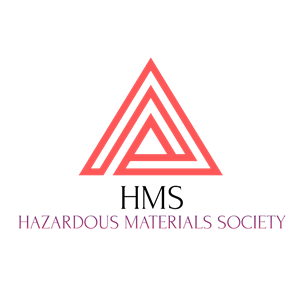
HAZARDOUS MATERIALS SOCIETY
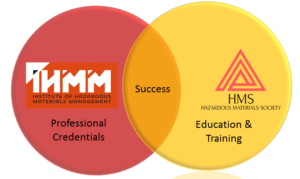
IHMM and HMS
The graphic to the left illustrates the relationship between IHMM and HMS. IHMM formed HMS to serve IHMM’s certificants. IHMM offers a variety of professional credentials and HMS creates education and training programs to serve the applicants and certificants of those credentials.
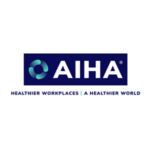
AIHA, HMS Training Partner, Adds Courses for IHMM Certificants
American Industrial Hygiene Association [AIHA] an HMS training partner, has added its first of many courses approved in advance for earning IHMM recertification certification maintenance points. We are pleased to promote these programs in support of IHMM certificants holding the CHMM, CHMP, CSHM, and CSMP credentials. Thank you, AIHA.

CHEMTREC, HMS Training Partner, Adds Courses for IHMM Certificants
CHEMTREC, an HMS training partner, has had 6 courses approved in advance for earning IHMM recertification certification maintenance points. We are pleased to promote these programs as reviewed and approved by the HMS Education and Training Committee, chaired by Diana Lundelius. Thank you CHEMTREC, and thank to HMS’ Education and Training Committee.

Bowen EHS, HMS Training Partner, Adds Courses for IHMM Certificants
Bowen EHS, an HMS training partner, has had 4 courses approved in advance for earning IHMM recertification certification maintenance points. We are pleased to promote these programs as reviewed and approved by the HMS Education and Training Committee, chaired by Diana Lundelius. Thank you Bowen EHS and thank to HMS’ Education and Training Committee.
Thank you Bowen EHS for contributing programs enabling IHMM certificants to engage in professional development and earn important CMPs! All three of the new Bowen EHS programs are available online and on demand.
| Daily | EPCRA Tier II Reporting | Bowen EHS | Online |
| Daily | CHMM Online Review | Bowen EHS | Online |
| Daily | Emergency Management Self-Paced PDC | Bowen EHS | Online |
| Daily | Acute Toluene Exposure Webinar | Bowen EHS | Online |
Thank you Bowen EHS for contributing programs enabling IHMM certificants to engage in professional development and earn important CMPs! All three of the new Bowen EHS programs are available online and on demand.

Respiratory Protection Program Management – Susan Harwood Training Grant
University of Texas Medical Branch, William J. Pate, CHMM
This training course is intended to educate participants on the requirements of developing and implementing a compliant Respiratory Protection Program. The focus of this course will be on topics related to preparation for an infectious disease pandemic. At the end of this training the attendee should be able to:
1) Manage an effective respiratory protection program through proficient application of 29 CFR 1910.134
2) Compare potential routes of exposure
3) Identify and implement potential controls (engineering, administrative, and PPE)
4) List the equipment needed to support fit testing
5) Explain the difference between qualitative and quantitative fit testing
6) Discuss the different types of respiratory protection available
7) Demonstrate correct donning/doffing of respiratory protection
This training course is 7.5 hours and participants will receive a certificate of completion that may be suitable for professional certification maintenance (CSP, CIH, CHMM, CHSP, etc.).
This course will provide 7.5 Continuing Nursing Education (CNE) contact hours. Accreditation statement: University of Texas Medical Branch at Galveston is approved with distinction as a provider of nursing continuing professional development by Louisiana State Nurses Association – Approver, an accredited approver by the American Nurses Credentialing Center’s Commission on Accreditation. LSNA Provider No. 4002176
This training is available only to employees and employers who are subject to OSHA regulatory requirements. Grant-funded training is not available to state or local government employees unless they have occupational safety & health responsibilities (e.g. occupational safety and health trainers, program managers, committee members, or employees responisble for abating unsafe and unhealthy working conditions for their organization). Registration in this course confirms that meet these conditions. This training will include the opportunity to don, doff, and fit test respiratory protection including N95, half-face, full-face, and powered air-purifying respirators. Anyone participating in this training and wanting to put on a respirator agrees that they have been medically cleared by their employer to do so in accordance with OSHA’s Respiratory Protection Standard.
The 8-hour training program is offered at various dates from March through September. For more information and registration for this FREE program go here >> https://www.utmb.edu/ehs/programs/radiation-occupational-safety-program/RPPSHTG2023
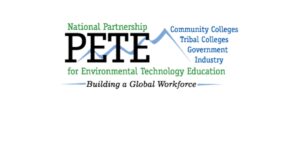
AT HMS/Rockville – FREE US DOT PHMSA HMIT GRANT HAZARDOUS MATERIALS REGULATIONS AWARENESS TRAINING WORKSHOP – BASIC – 24 IHMM CMPs
2023 PHMSA HMIT Grant 24-Hour DOT HAZMAT Regulations Awareness Course – BASIC – Rockville, MD
June 6 @ 8:00 am – June 8 @ 5:00 pm – FREE
Register Here > https://hazmatsociety.org/training/2023-phmsa-hmit-grant-24-hour-dot-hazmat-regulations-awareness-course-rockville-md/

FREE US DOT PHMSA HMIT GRANT HAZARDOUS MATERIALS REGULATIONS AWARENESS TRAINING WORKSHOP – 24 IHMM CMPs
Courses are here> Go to https://hazmatsociety.org/education-training/ Under “Find Training,” Search for NPETE>
These workshops are offered with U.S. DOT PHMSA HMIT (Hazardous Materials Instructor Training) Grant support to the National Partnership for Environmental Technology Education (National PETE). This training is FREE for employees and federal, state, county, and local government employees involved in DOT HazMat Shipping, Receiving and Handling via Ground, Air, and Vessel Transportation.
The workshop curriculum is in accordance with 49 CFR § 172.704 for General Awareness, Function-Specific, Safety, and Security Awareness training requirements. Class size is limited to 10-15 students with mask/social distancing protocols, so act fast. Minimum of 6 attendees is needed to confirm the class.
Registration: Contact Mr. Raymond Davis, CHMM, IHMM Fellow, NPETE US DOT PHMSA HMIT Grant Project Coordinator/Instructor at [email protected]
Please provide Mr. Davis with the following registration information via email to [email protected]
Your name, Your company, Your company address/city/state/zip, Phone number, and Email
Upon receipt of your registration information, the address of the training location will be provided.
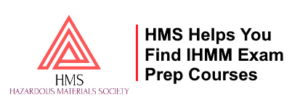
Easily Find Courses to Help You Pass IHMM Credential Exams
A core mission of HMS is education and training. Part of that mission includes assembling the best and most effective courses to assist IHMM applicants in passing their IHMM credential exams.
CDGP® Prep Course
CE-1112: CDGP® Exam Prep – Columbia Southern University – Available On Demand
CHMM® Prep Courses
Oct. 24-25 – CHMM Prep Course – PTP Consulting
Daily – CHMM® Online Review – Bowen
Daily – CHMM® Prep Course – Institute of Safety & Systems Management
Daily –Certified Hazardous Materials Managers (CHMM®) Exam Prep – SPAN Exam Prep, Division of ClickSafety
CSHM® Prep Courses
CSMP® Prep Courses
IHMM and HMS Tie Exam Preparation Together for Applicants
Every IHMM certification that requires an examination has a section of its website entitled Examination Preparation.
Connected to the Examination Preparation panel is a companion panel that is Find a Course to Prepare for the Exam.
You see the Find a Course to Prepare for the Exam panel from the CHMM site at left.
When you click on the Find a Course to Prepare for the Exam panel it takes the applicant directly to the HMS site where all CHMM prep courses may be found and chosen.
For the 392 CHMM applicants IHMM had on April 4, 2023, all 392 looking for CHMM prep courses could see and chose their favored CHMM exam prep course. If your course is not on the HMS platform, none of the 392 CHMM applicants could find you.
If you want your CHMM prep course on the HMS platform so it can be found by IHMM CHMM applicants, contact Gene Guilford at [email protected]
HMS Makes Finding Courses to Earn CMPs Easy
Every year more than 1,600 IHMM certificants have to recertify their credentials, evidenced their continuing commitment to improvement and learning to elevate their professional credential.
Earning Certification Maintenance Points [CMPs] is illustrated under Recertification of Your Credential, that includes the Recertification Claims Manual – Appendix A, that details all of the ways a certificant may earn CMPs > https://ihmm.org/recertification-claims/
Having mastered that manual, how does an IHMM certificant find courses to earn CMPs?
HMS has made that simple and easy.
- Go to https://hazmatsociety.org/education-training/
- Scroll down until you see a row of buttons…click on the CMPs button

The system will then generate all of the courses on the HMS E&T platform with IHMM CMPs already attached.
The next developments by the HMS E&T committee will refine available courses’ CMPs by individual credential!
HMS Certified Dangerous Goods Professional [CDGP] Exam Prep
The Columbia Southern University/HMS CDGP prep course is found here on the Hazardous Materials Society [HMS] education and training website > https://hazmatsociety.org/training/ce-1112-cdgp-exam-prep/2022-02-02/
The CSU CDGP exam prep course is delivered entirely online and may be initiated by any CDGP applicant at any time. The CDGP applicant has up to 10 weeks to complete the prep course, though an extension of the 10 weeks may be requested from CSU directly. The CSU CDGP exam prep course contains 8 modules covering the 4 principle texts involved in the CDGP exam, as follows:
- UN Recommendations on the Transport of Dangerous Goods, and
- International Civil Aviation Organization’s Technical Instructions (ICAO TI), and
- International Air Transport Association’s Dangerous Goods Regulations (IATA DGR), and the
- International Maritime Organization’s Dangerous Goods Code (IMDG Code).
More information on the IHMM Certified Dangerous Goods Professional [CDGP] credential may be found here > https://ihmm.org/cdgp/
HMS Jobs Listings
Environmental Compliance Program Specialist Sr. – St. Louis, MO in GAC St. Louis, Gulfstream Aerospace Corporation
Safety/Environmental Coordinator in GAC Savannah, GA., Gulfstream Aerospace Corporation
Environmental Compliance Program Specialist II in GAC Savannah, GA., Gulfstream Aerospace Corporation
Corporate Environmental Compliance Program Manager, Savannah, GA., Gulfstream Aerospace Corporation
Sr. Environmental Compliance Program Specialist, Dallas, TX., Gulfstream Aerospace Corporation
Regional Environmental Affairs Director- Midwest, Chicago, IL., Covanta
Hazardous Materials Inspector II- San José Fire Department

Applications for the 2023 HMS Scholarship Awards Now Open
The HMS scholarship award is given annually to undergraduate and graduate students whose academic program and research studies have the potential to address the most serious issues in handling hazardous materials, dangerous goods, environmental issues, health & safety challenges. Applicants must be U.S. citizens or permanent residents enrolled in accredited U.S. academic institutions.
DEADLINE TO SUBMIT SCHOLARSHIP AWARD APPLICATIONS IS December 1, 2023. All submissions and associated materials must be submitted using the online form.
Scholarship Winners Will Be Announced at the HMS Annual Meeting.
For More Information, Visit > https://hazmatsociety.org/scholarship/
Donate to HMS
One of the most important projects of the Hazardous Materials Society is our Scholarship Program.
HMS wants to make it as easy as possible for those who cannot always afford to participate in pursuing certification, or keeping up with professional development, or attending great conferences and receiving outstanding training. HMS does not solicit contributions from the general public. HMS does ask IHMM’s certificants and their companies and our education and training vendors to consider a contribution.
Here, through your generosity, you can make a difference in promoting the ability of those who can afford it least to become participants in our communities of practice.
It’s never too late to make a difference, so don’t let this opportunity to make a difference pass you by. Please consider a tax-deductible donation of $250, $500 or what you can to help build HMS’s effort to help others in our communities of practice.
RCM&D Professional Liability Insurance
HMS is proud to have partnered with RCM&D to be able to offer an outstanding comprehensive professional liability insurance program to IHMM certificants. Here, you will find information about this important program offering Environmental Consultants and Engineers Professional Liability coverage. This coverage is intended to add protection for loss stemming from actual or alleged negligent acts, errors and omissions in performing professional services.
For more information see > https://hazmatsociety.org/professional-liability-insurance/
Member Benefits of Hazardous Materials Society
99% of IHMM certificants are aware of the Hazardous Materials Society, which we appreciate. IHMM established the Hazardous Materials Society in order to support and provide services to IHMM certificants.
Did You Know?
Your company’s membership dues for Associate Membership in the Hazardous Materials Society (HMS) are 100% tax-deductible and your participation directly supports scholarship and education/training opportunities for professionals working in hazmat and EHS. Joining as an Associate Member expresses your commitment and your company’s leadership in giving back to our professional community. Join today to claim your tax deduction for the 2020 tax year while expressing your company’s professional affiliation and accessing tools for your marketing and business development plans.
As an IHMM certificant, you pay no dues to take advantage of IHMM’s Foundation at HMS. We do appreciate IHMM’s certificants encouraging their companies to contribute.
To learn more about what HMS is doing now and what they are planning for the future, please see the new Member Benefits page here.
Columbia Southern University
The Hazardous Materials Society [HMS] is a partner of Columbia Southern University. Columbia Southern University is an online university based in Orange Beach, Alabama, that strives to change and improve lives through higher education by enabling students to maximize their professional and personal potential.
A subsidiary of Columbia Southern Education Group, CSU offers online degree programs at the associate, bachelor, master, doctorate or certificate levels in a multitude of areas such as occupational safety and health, fire administration, criminal justice, business administration, human resource management, health care administration and more. CSU also features undergraduate and graduate certificate programs to provide focused training in specialized areas for adult learners.
Click on the CSU graphic at left and learn more about the professional development and degree program opportunities at CSU.
IHMM CONFERENCES FOR 2023
IHMM will attend and support a number of conferences and trade shows throughout 2023, virtually as well as in-person as resources allow. Below are some of the conferences IHMM will support in 2023.
Are there conferences you believe IHMM should attend that do not appear here? If so, let us know by sending an email to [email protected]

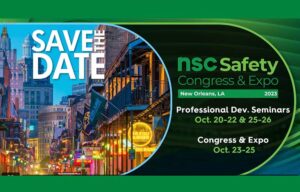

IHMM has a companion organization for which education and training programs are presented and delivered. The Hazardous Materials Society is IHMM’s Professional Association and HMS’ education and training website can be found here. These events are produced independently of IHMM, and their providers have no access to IHMM certification examinations or program information other than that which is publicly available.
IHMM AFFILIATIONS
9210 Corporate Boulevard, Suite 470
Rockville, Maryland, 20850
www.ihmm.org | [email protected]
Phone: 301-984-8969 | Fax: 301-984-1516




